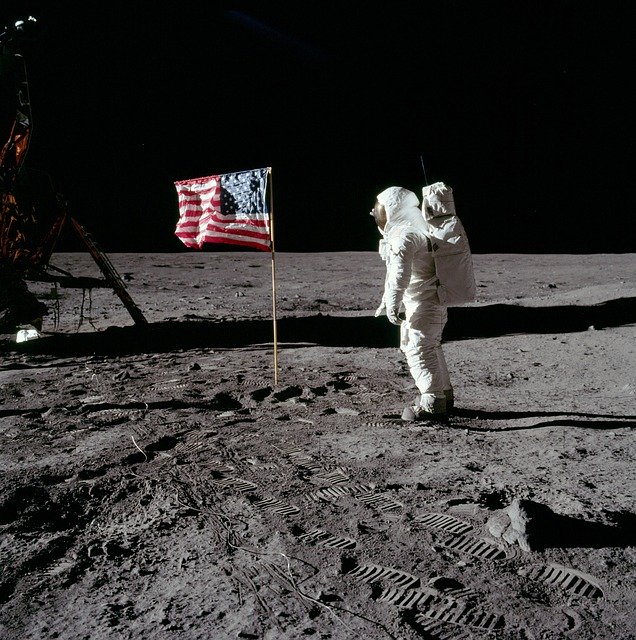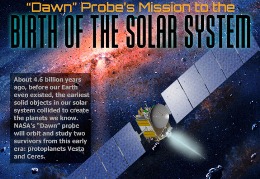Here’s How NASA Chose the First Astronauts to Walk on the Moon

Right now, everyone is thinking about the moon — how we’re going to get there, when the next set of astronauts from the Artemis missions will land and whether President Trump seriously thinks we’re going to mine our nearest satellite for minerals.
While we’re excited to see the Artemis astronauts make their way to the lunar surface, they aren’t the first human beings to set foot on the moon. How did NASA choose the Apollo astronauts for the 1969 mission? How has the selection process changed over the years, and what is NASA looking for in its Artemis astronauts?
Becoming an Apollo Astronaut
The first human beings to set foot on the moon took that one giant leap for mankind on July 20, 1969. On that iconic day, Neil Armstrong became the first person to walk on the surface of an alien world — even if it was in orbit around our home planet. What did it take for Armstrong and the generations of astronauts before him to earn the right to go to space?
Early astronauts didn’t have to meet the stringent requirements that today’s space travelers will face. The ones that flew in the Mercury program were drawn from the military. Test pilots were already used to many of the gravitational forces that they might encounter during launch. They had made a career out of pushing aircraft to their extremes.
Other than that, Mercury astronauts just had to be shorter than 5 feet, 11 inches, younger than 40 and in excellent physical condition.
Apollo and Gemini astronauts had more hoops to jump through. NASA still preferred high-performance pilots over other applicants, but they needed to be younger — with the maximum age dropping to 35 — and could be taller since there was more room in the capsules.
This was also the first time that the space program was opened up to civilians. The Apollo astronauts were the ones to finally land on the moon, though we haven’t gone back to visit our nearest celestial neighbor since the end of the Apollo program.
Astronaut Selection Through the Years
Back during the Mercury program, we were still learning the ropes of space travel. The selection process has changed dramatically over the years. The need for military pilots is still there, but there are plenty of opportunities for astronauts without flight time under their belt.
Today, there are two different types of astronauts — pilots and missions specialists. Pilots need to have military flight experience or will need to take an additional year of flight training before they can pilot a spacecraft.
Mission specialists can fall into one of four categories — engineers, scientists, physicians and educators. International astronauts from other country’s space agencies, and payload astronauts who work someone other than NASA, fall into their own categories.
Today, anyone can apply to become an astronaut. For NASA applications, you have to be a U.S. citizen and have a minimum of a bachelor’s degree in a related field, in addition to meeting the physical requirements for spaceflight. If you’re not applying to be a pilot, you need to have at least three years of related experience in another field. Teaching at any grade level from K-12 through college is considered to be an applicable experience for astronaut candidates.
If you want to be a pilot, you need at least 1,000 hours of flight experience in jet aircraft. While being a test pilot isn’t a requirement anymore, it is still a bonus and looks good on your application.
Explorers Wanted for Moon Mission
The beginning of 2020 marked the first time in four years that NASA has accepted astronaut applications, this time for the Artemis moon mission that is hoping to get people to the moon by 2024. Becoming an astronaut, even in this exciting time, is challenging. The last time NASA asked for applications was 2015, and the space agency had more than 18,300 people apply for the chance. After two years, the graduating astronaut class was made up of 11 intrepid space travelers.
According to NASA, more than 12,000 potentials have applied to join the Artemis generation of astronauts. It’s an exciting time to be part of NASA or any space agency around the globe. NASA isn’t expected to announce its chosen candidates until summer 2021 so it can navigate the thousands of applications and start training potential new astronauts.
A Step in the Right Direction
The first thing we have to do to get astronauts back on the moon is for the U.S. to regain the ability to launch astronauts from American soil. For years, since the end of the Space Shuttle program, we’ve relied on Russian Soyuz capsules to transport astronauts back and forth to the International Space Station. While these launches have been successful, if we want to be a major space power again, we need to be able to launch from home.
SpaceX, in conjunction with NASA, has been working toward that end, and now we have a date. On May 27, 2020, SpaceX’s Crew Dragon capsule will be test-launched from a Falcon 9 rocket with test pilots Bob Behnken and Doug Hurley at the helm.
It’s a step in the right direction, and it will be the first crewed launch from U.S. soil since the Space Shuttle program closed its doors.
Want to Be An Astronaut?
It might be too late to apply to be among the first batch of Artemis generation astronauts, but having the moon as a tangible goal has reignited our desire to go to the stars. If you want to be an astronaut, start studying now and work on a degree in a STEM field. This, along with the relevant experience and fitness tests, will make it easier for you to apply to join the next batch of astronauts when NASA opens those doors again.
We’re going back to space, and it’s an exciting time to be alive. Get ready to enjoy the journey.
Would you like to receive similar articles by email?





